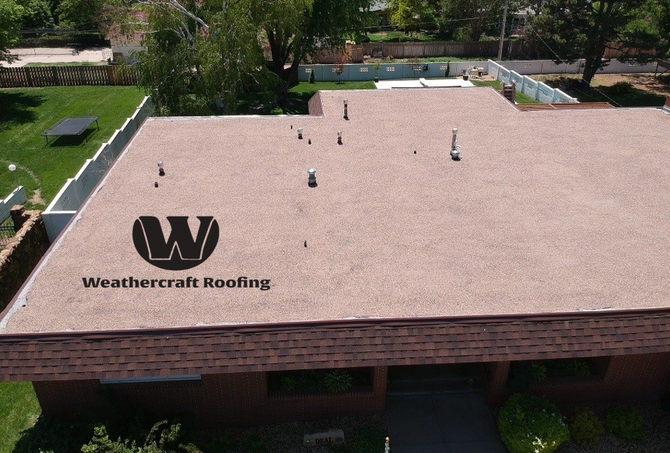Flat roofs are becoming increasingly popular for commercial properties, and for good reason. They offer a variety of benefits, including cost savings, easy maintenance, and the potential for added functionality. In this article, we’ll explore why flat roofs are a great choice for your commercial building and how they can save you money and time in the long run.
Advantages of Flat Roofs for Commercial Buildings
Flat roofs offer significant advantages for commercial buildings, including easier installation. Since they are quicker to install than pitched roofs, flat roofs help reduce labor costs and installation time, making them a practical and efficient choice for commercial properties.
Additionally, flat roofs maximize available space. With the roof surface being flat, it can be used for additional purposes, such as placing HVAC units, installing solar panels, or creating a rooftop garden. This is especially useful for commercial buildings in urban areas where space is limited.
Materials Used in Flat Roofing: EPDM, TPO, and PVC
When it comes to flat roofing, there are several high-quality materials to choose from, each offering unique benefits. Here are the most commonly used materials for commercial flat roofs:
EPDM Roofing: Durability and Weather Resistance
EPDM (Ethylene Propylene Diene Monomer) is a synthetic rubber that excels in durability and weather resistance. It’s ideal for flat roofs in both hot and cold climates due to its ability to withstand extreme weather. EPDM is easy to install, and its low-maintenance nature ensures long-term protection against leaks.

TPO: Energy Efficiency and UV Resistance
TPO is a reflective material that boosts energy efficiency by reducing heat absorption. It’s ideal for areas with strong sun exposure due to its UV and ozone resistance. TPO also offers great puncture resistance and is durable in extreme weather.
PVC (Polyvinyl Chloride)
PVC is a strong, durable material that’s resistant to water, fire, and chemicals. It’s known for its longevity and is often used in high-traffic areas due to its superior resistance to wear and tear. PVC is a great option for flat roofs that require extra protection against the elements and heavy use.
Flat Roof Maintenance: Tips for Extending Roof Life
Flat roofs are low-maintenance but still require regular care to ensure their longevity. Here are some tips to keep your flat roof in the best shape possible:
- Make sure to inspect your roof frequently for debris that could clog drainage systems, such as leaves or branches.
- Keep gutters and downspouts clear of blockages to avoid water accumulation.
- It’s a good idea to schedule an annual inspection with a professional to assess any signs of damage or wear.
- Make necessary repairs promptly to avoid further damage, especially if there are cracks or punctures in the roofing material.
Cost-Effectiveness of Flat Roofs Over Time
Flat roofs offer significant cost savings, especially over the long term. The initial installation cost is typically lower than for pitched roofs, and flat roofs are easier to inspect, repair, and maintain, saving you money on upkeep.
Additionally, the ability to use the flat roof space for additional purposes, such as installing solar panels or rooftop units, can provide cost savings through energy efficiency. In many cases, flat roofs also help reduce heating and cooling costs by improving the insulation of the building.
Choosing the Right Flat Roof for Your Commercial Property
Flat roofs provide numerous benefits for commercial buildings, from cost savings and ease of maintenance to versatility. Proper material selection and maintenance will ensure your flat roof remains functional and valuable for many years. Work with a knowledgeable contractor to ensure the right choice for your business.
Want to know more about flat roofing? Get in touch with us for a free consultation, and we’ll guide you toward the best flat roofing options for your business.
#FlatRoofing #CommercialRoofing #RoofInstallation #EPDM #TPO #PVC #RoofMaintenance #EnergyEfficiency #BusinessRoofing